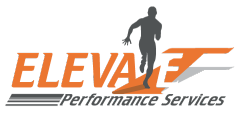As the off-season looms near,
it’s time to start thinking about how to enjoy yourself, but at the same time not hurt yourself or your performance. What you do in this portion of the year will impact your entire season next year. Since we are all aging (if you are not, please share your secret with the rest of us!), the health of our bones should be top priority. Especially if you are like me and want to continue racing through your golden years, so you can always win your age group because you are the only one in it! That’s my Kona plan, in case you were wondering.
So, how do we preserve our body to get there?
Calcium

We lose calcium (among other things) through our sweat, so athletes need to be even more concerned with this issue than sedentary folks. Calcium is stored (not produced by) in your bones which dictates the strength of your bones. Calcium is abundant in our food supply and it is rare to find someone that doesn’t get their RDA. But if this is true, then why are there so many instances of osteopenia, osteoporosis, and recurring stress fractures in young and middle aged athletes? The answer is that a poor diet which creates inflammation and acidity in your system can be detrimental to your ability to store calcium and keep your bones strong.
Blood has an alkaline pH of 7.35-7.45 and any fluctuation outside of this could be life threatening. Your body has a precise system to regulate pH, so we can continue living our fabulous lives. When your internal environment does get acidic, this system will balance the pH of your blood by utilizing alkaline agents from within. That means taking stored calcium, magnesium, and phosphorus from your bones to bring the blood to it’s standard pH range. While this is a normal process happening all the time in our bodies, the danger lies in always needing more calcium to equalize our blood then we can give back to our bones. This happens from eating too many foods that create acidity without the balance of enough alkaline creating foods. Keep in mind that just because a food by itself may be acidic, a lemon for example, does not mean that it acts as an acid in your system. Lemons are a great alkalizing food. The best sources of highly alkalizing foods are all green vegetables – chlorophyll is the factor that helps raise pH levels in the body, so the darker the better. Here are two food pH charts http://bit.ly/1bE6BIf and http://bit.ly/18WuiEw for you to reference.
Vitamin D
While Vitamin D is well known for its assistance with the absorption of calcium, another important function of vitamin D is to promote healthy growth and repair of your bones. The best source of vitamin D is the sun.  It can be challenging in the northeast winter months to find time in the sun, but getting as little as 30 minutes of sunlight daily is helpful. A great excuse to ditch that treadmill and head outside!
It can be challenging in the northeast winter months to find time in the sun, but getting as little as 30 minutes of sunlight daily is helpful. A great excuse to ditch that treadmill and head outside!
Weight bearing exercise
Outside of diet, the best way to support your bones is to ‘pick things up and put them  down’. Bones are living things too and like your muscles, if you don’t put them into action you risk losing them. Exercises that work against gravity are key to boosting your bone density. Although running is a great weight bearing exercise, your athletic body will get more out of lifting weights. Building your muscles and bones at the same time is a no brainer. In addition to that, increasing your muscle strength will help keep your joints supported and reduce the impact to them when you are pounding the pavement.
down’. Bones are living things too and like your muscles, if you don’t put them into action you risk losing them. Exercises that work against gravity are key to boosting your bone density. Although running is a great weight bearing exercise, your athletic body will get more out of lifting weights. Building your muscles and bones at the same time is a no brainer. In addition to that, increasing your muscle strength will help keep your joints supported and reduce the impact to them when you are pounding the pavement.
What are your favorite off-season bone supporting activities?
Feel good, do what you love,
Nicci
